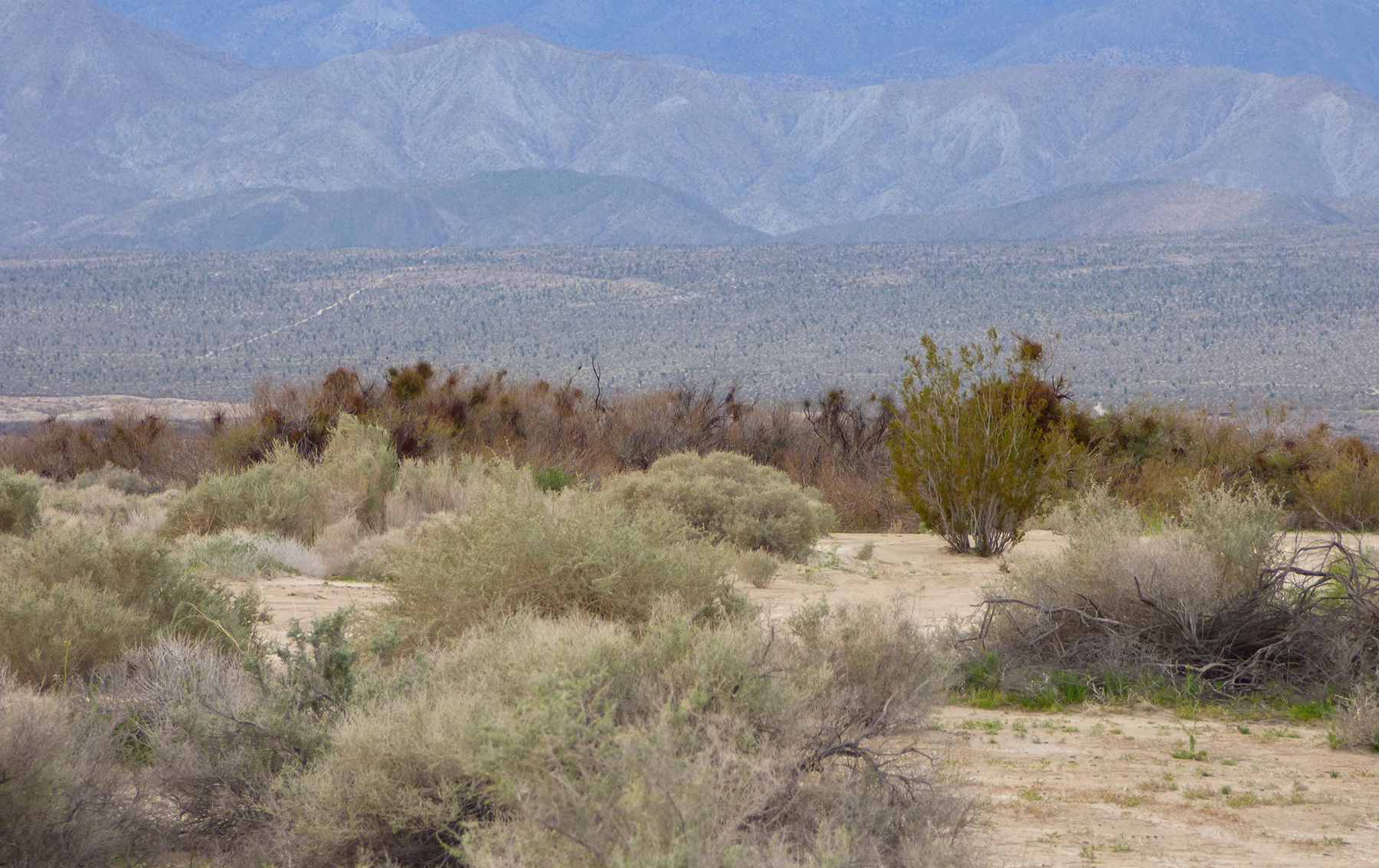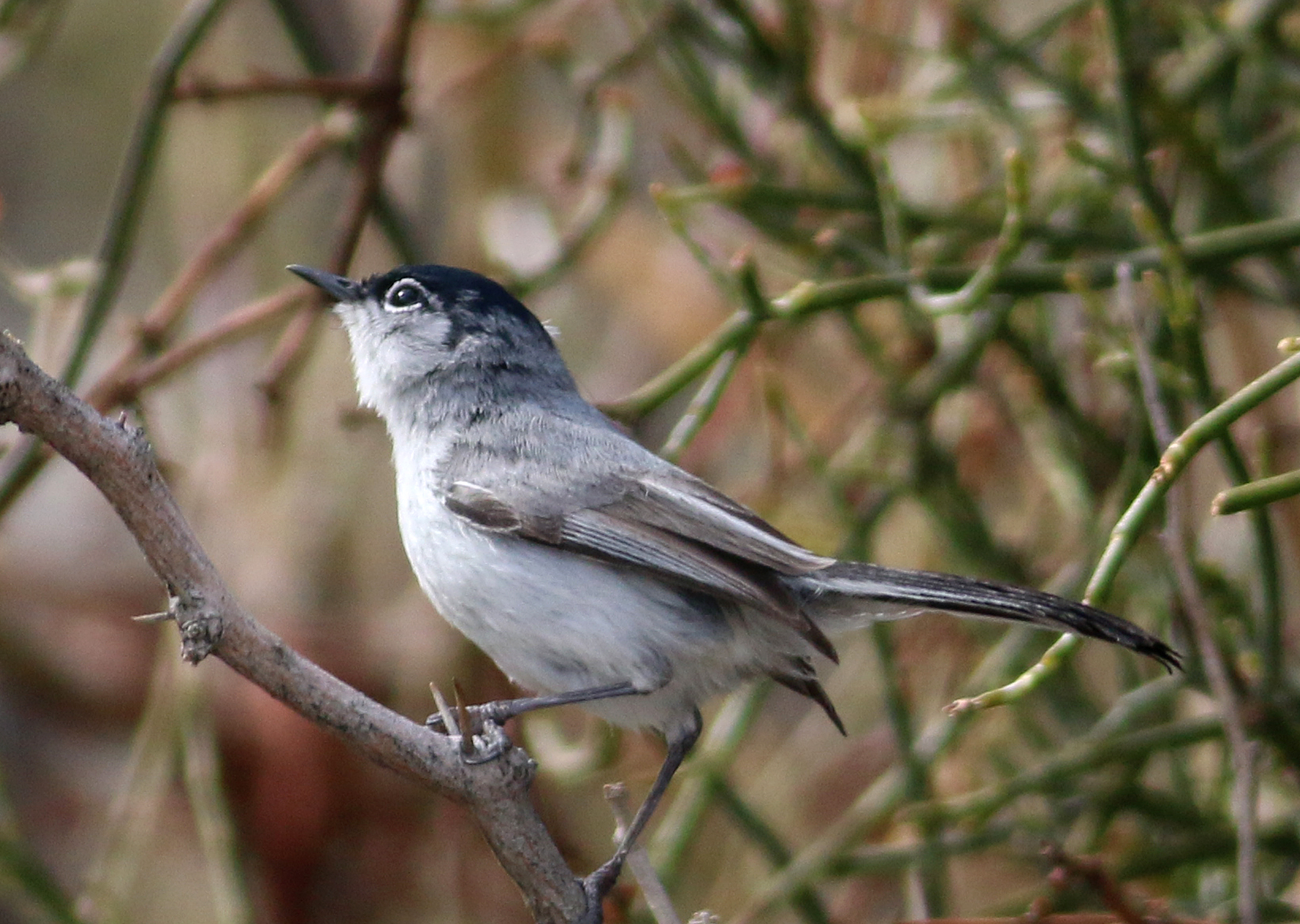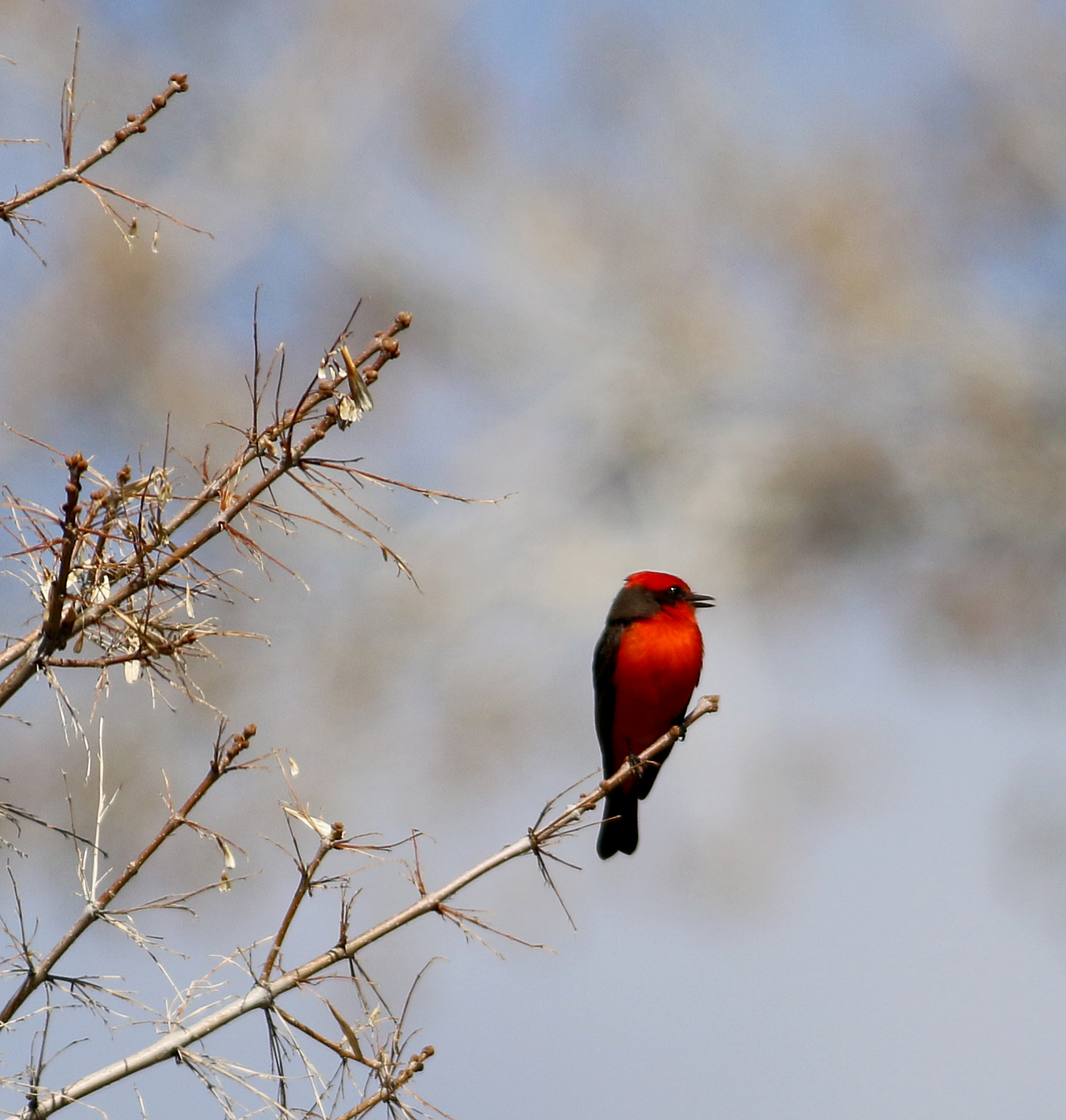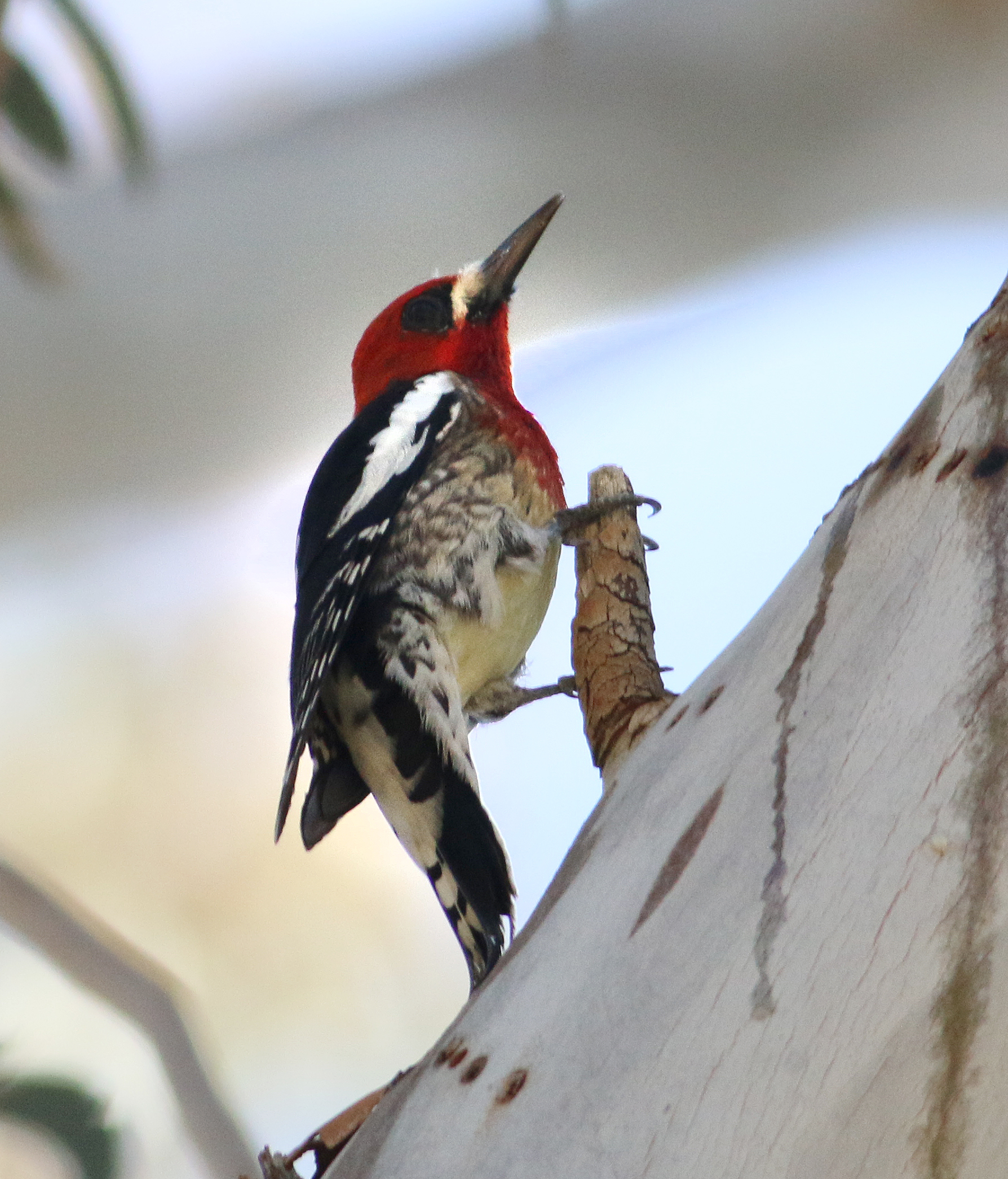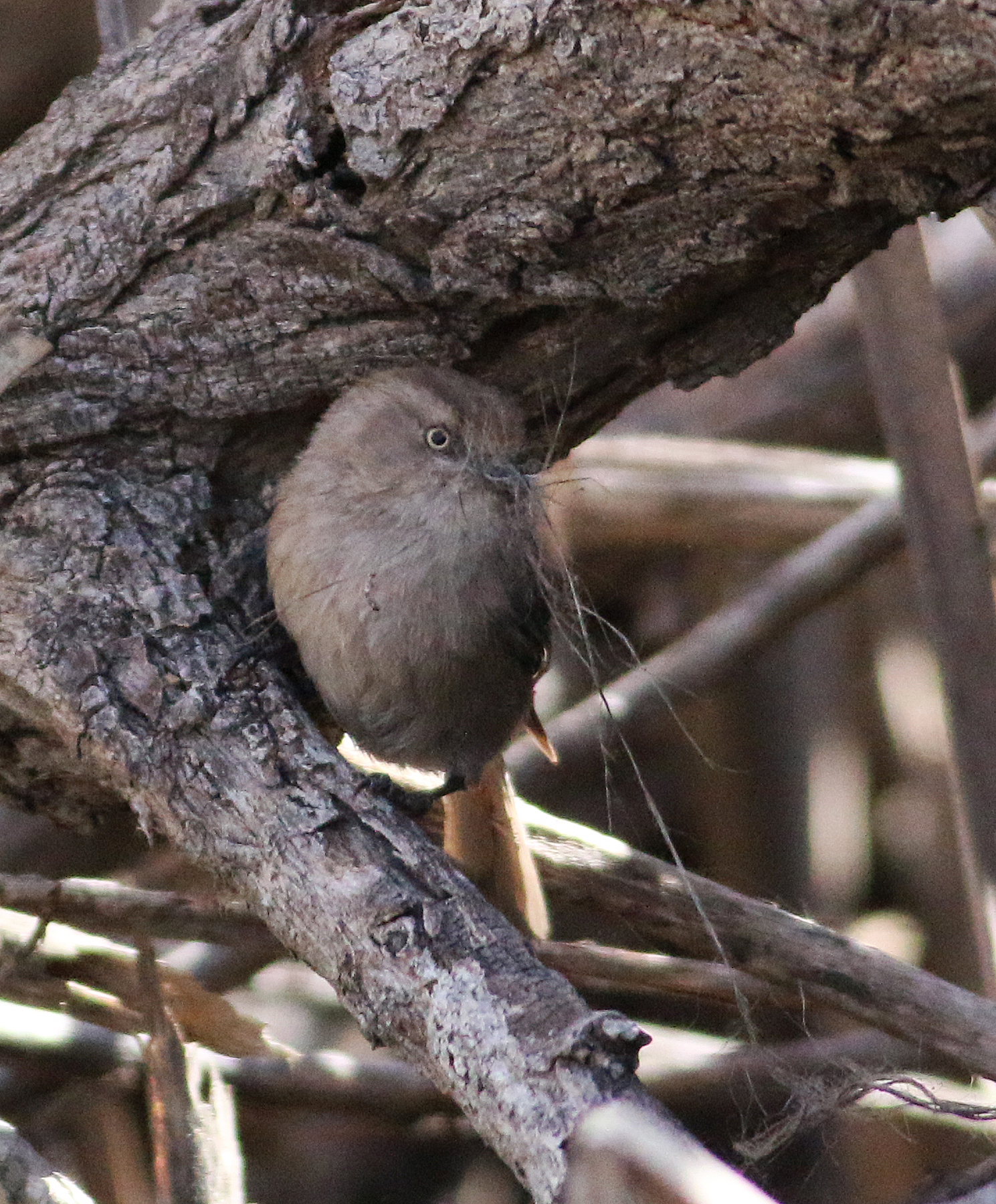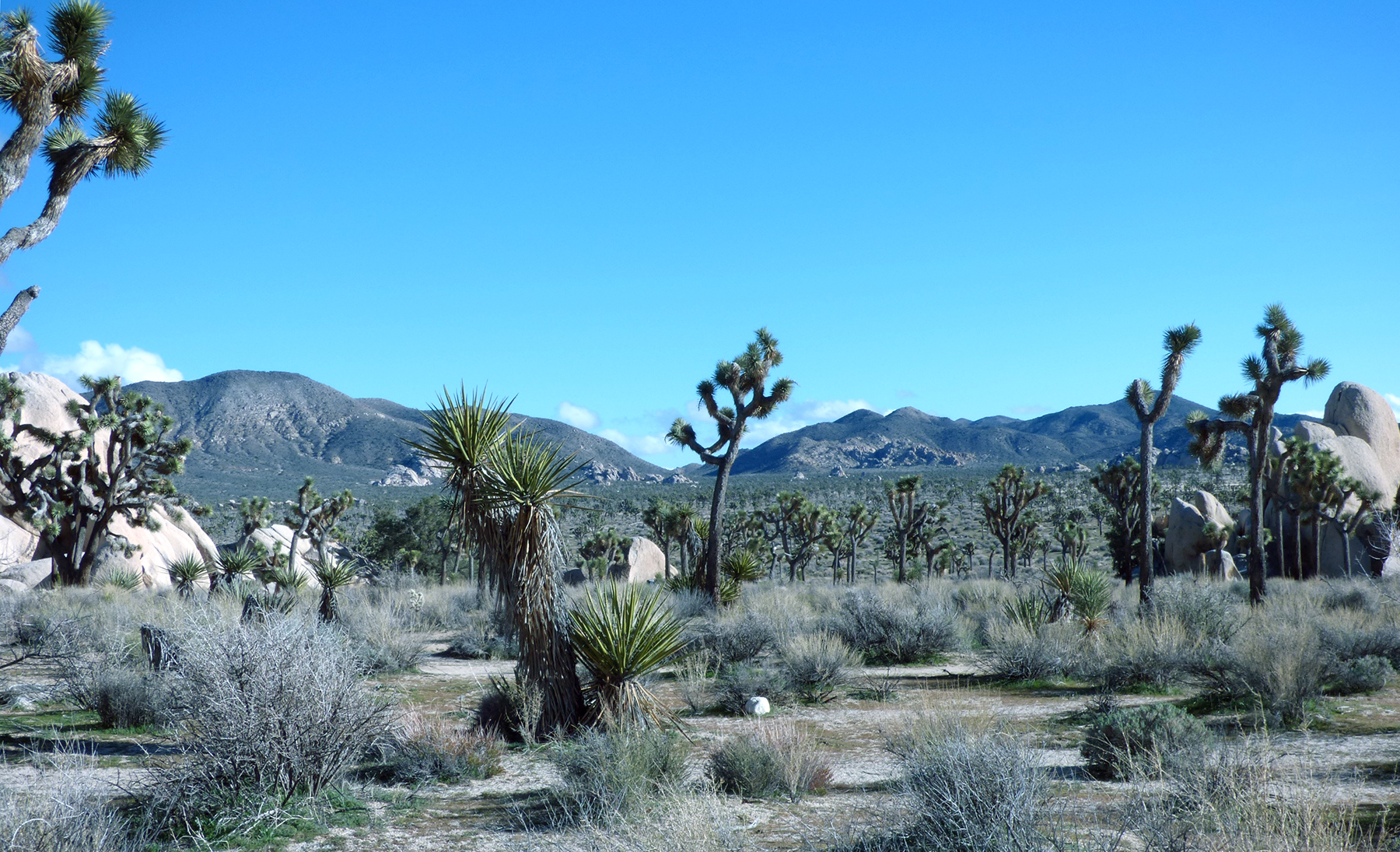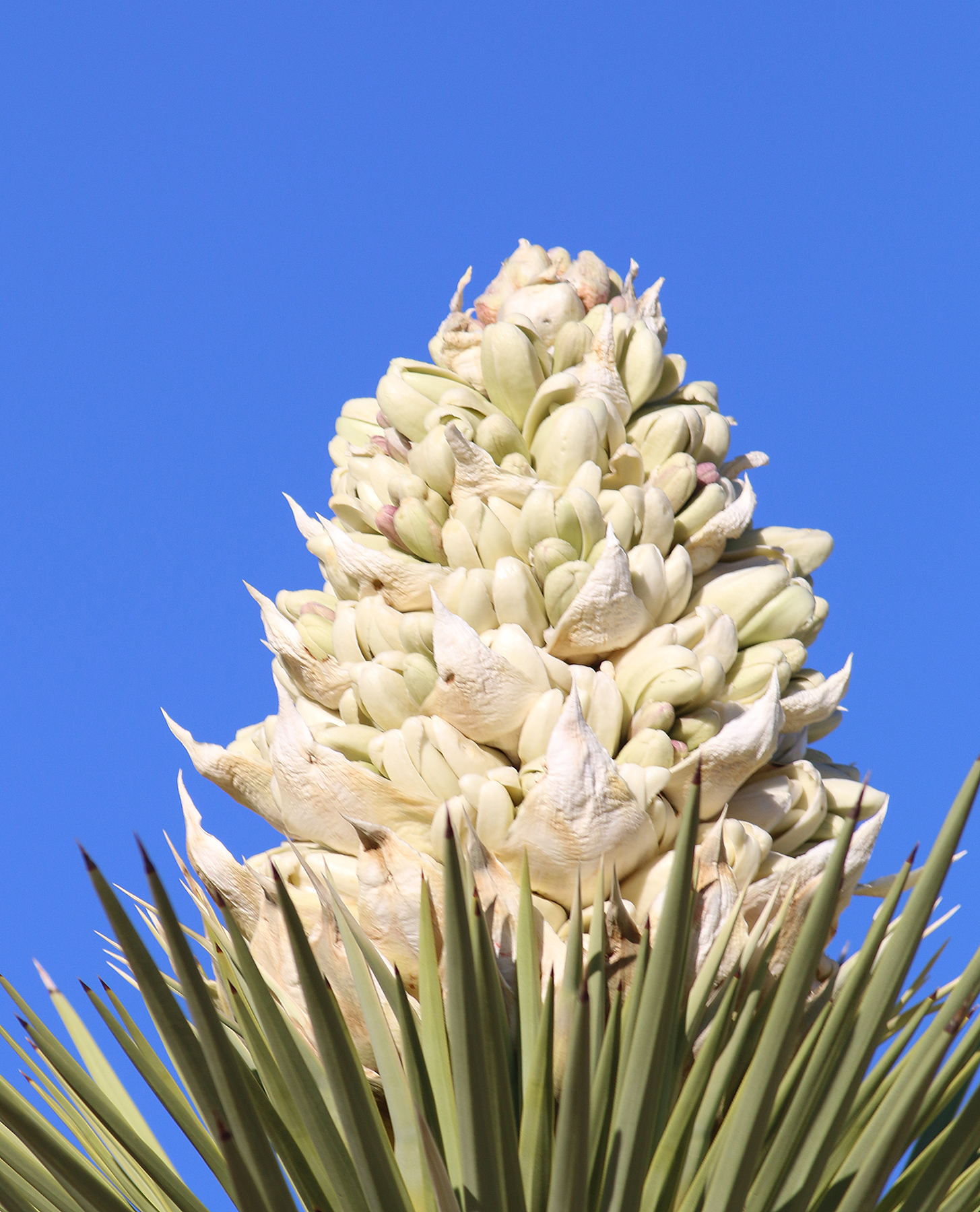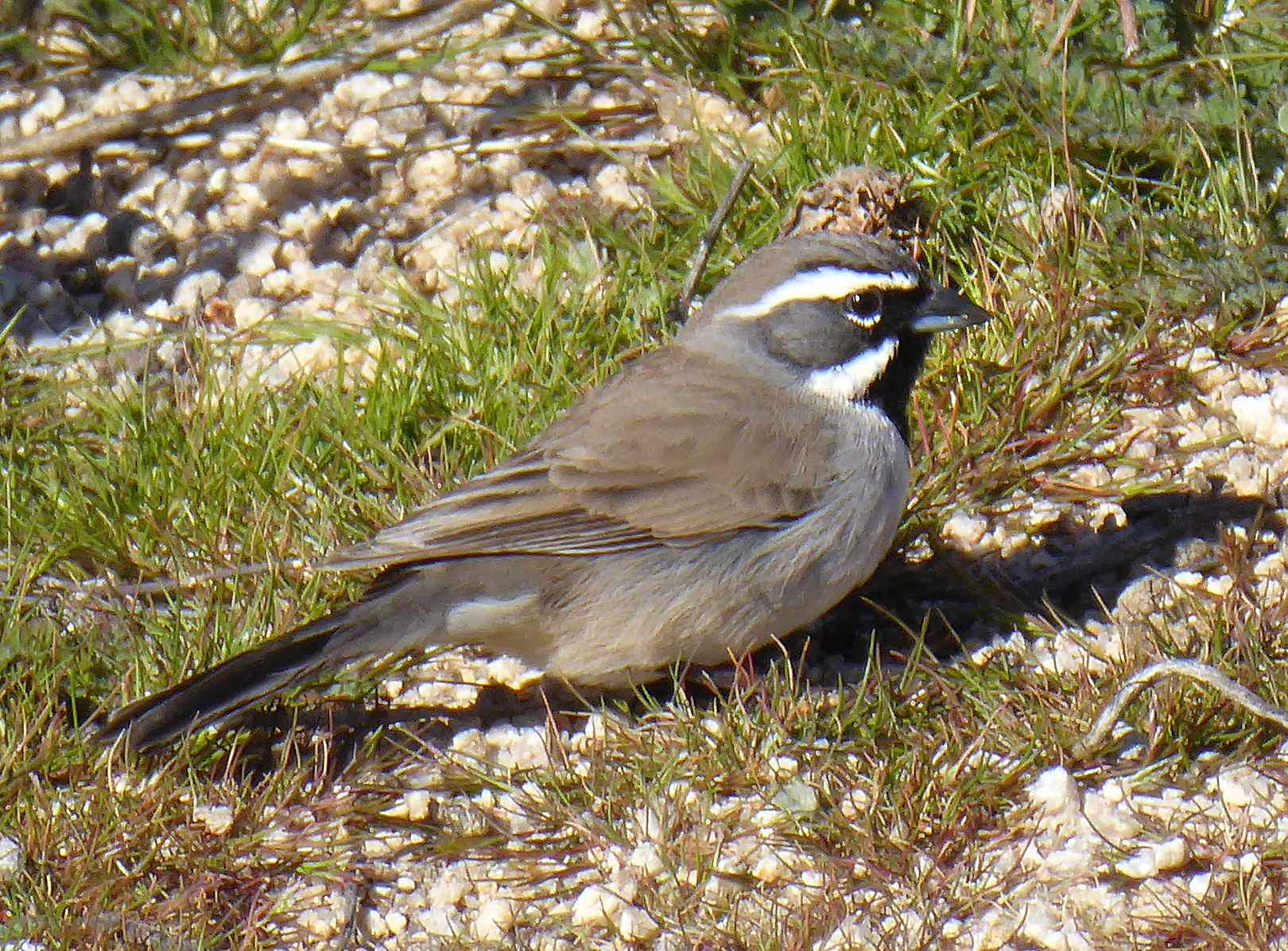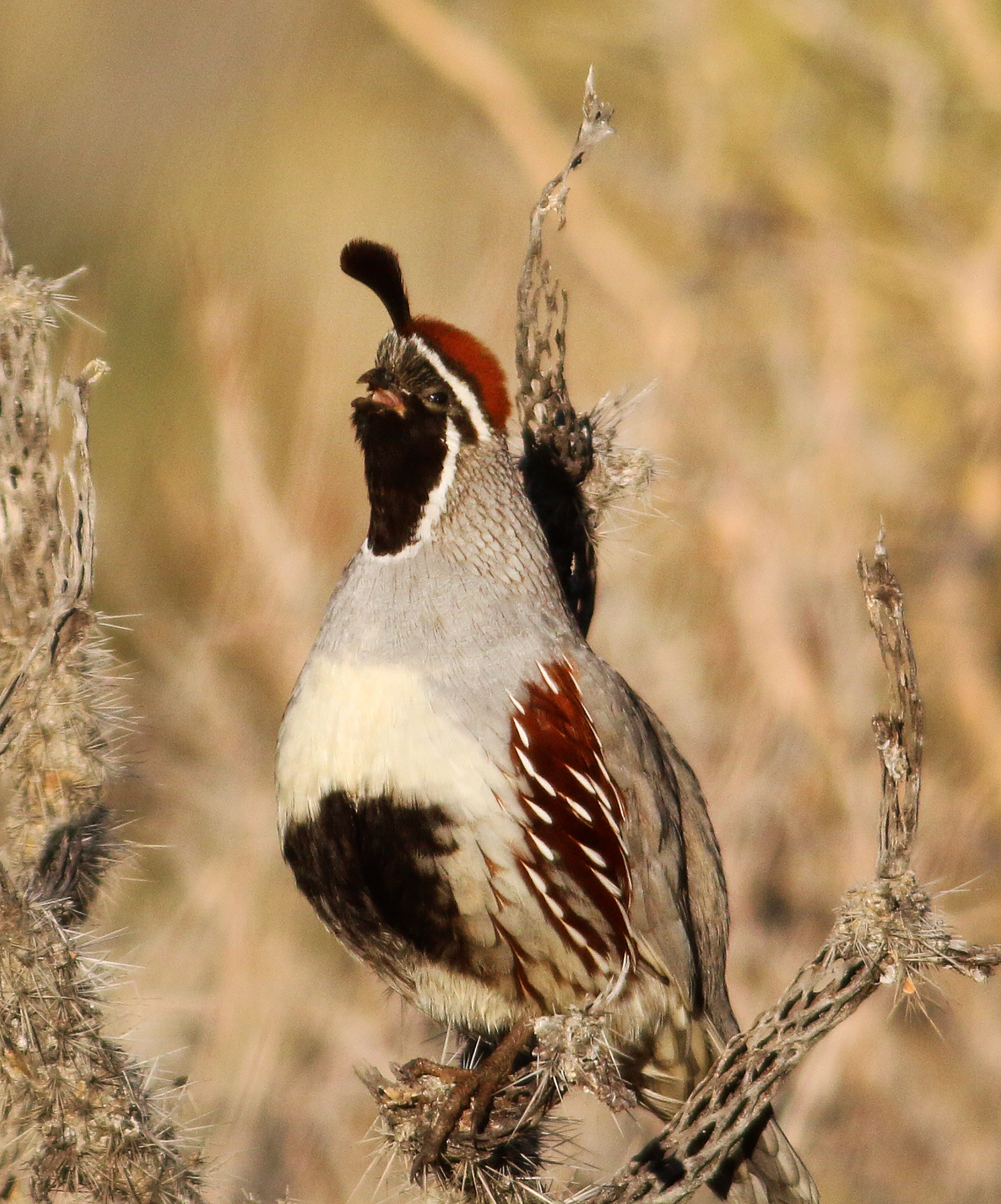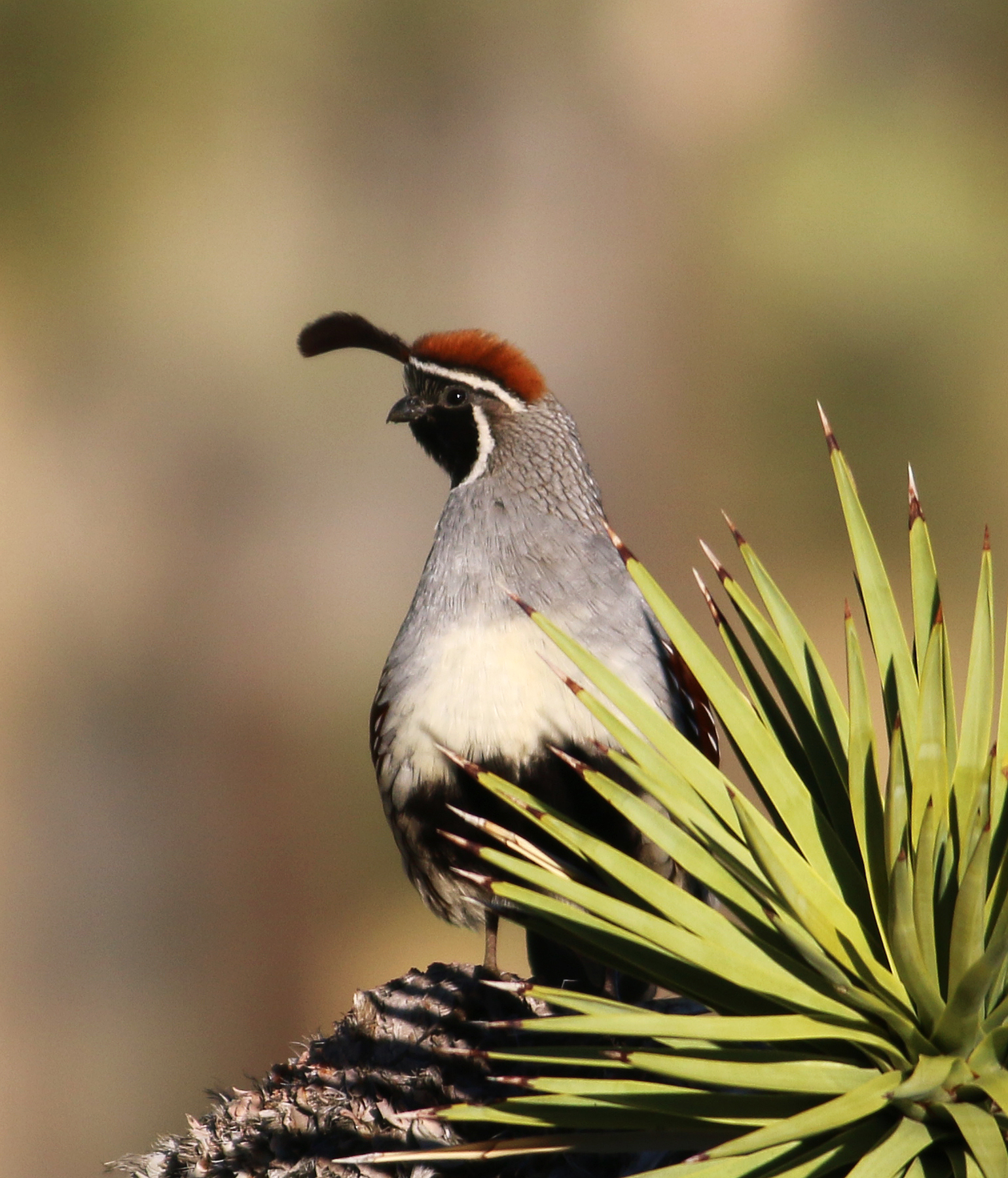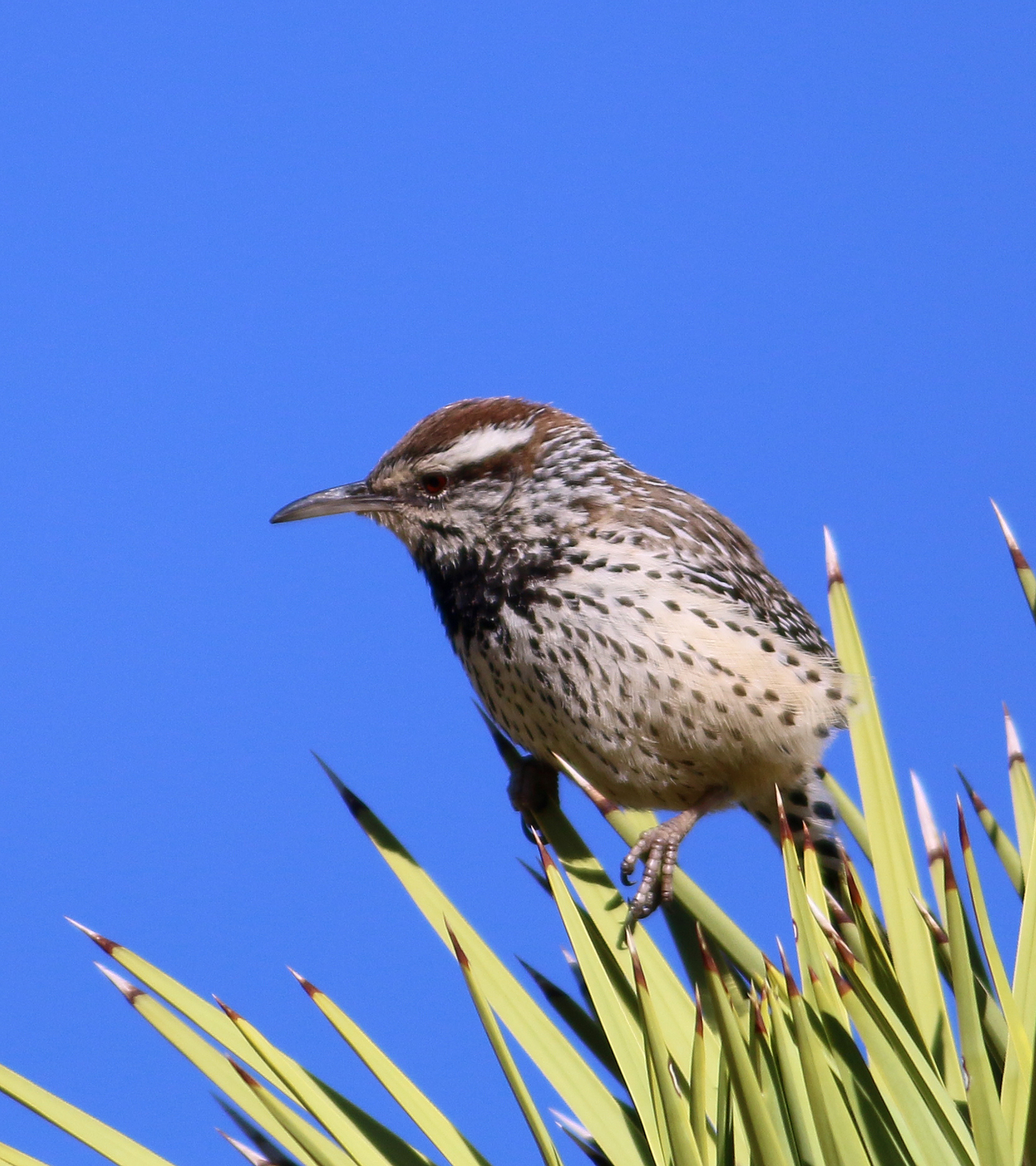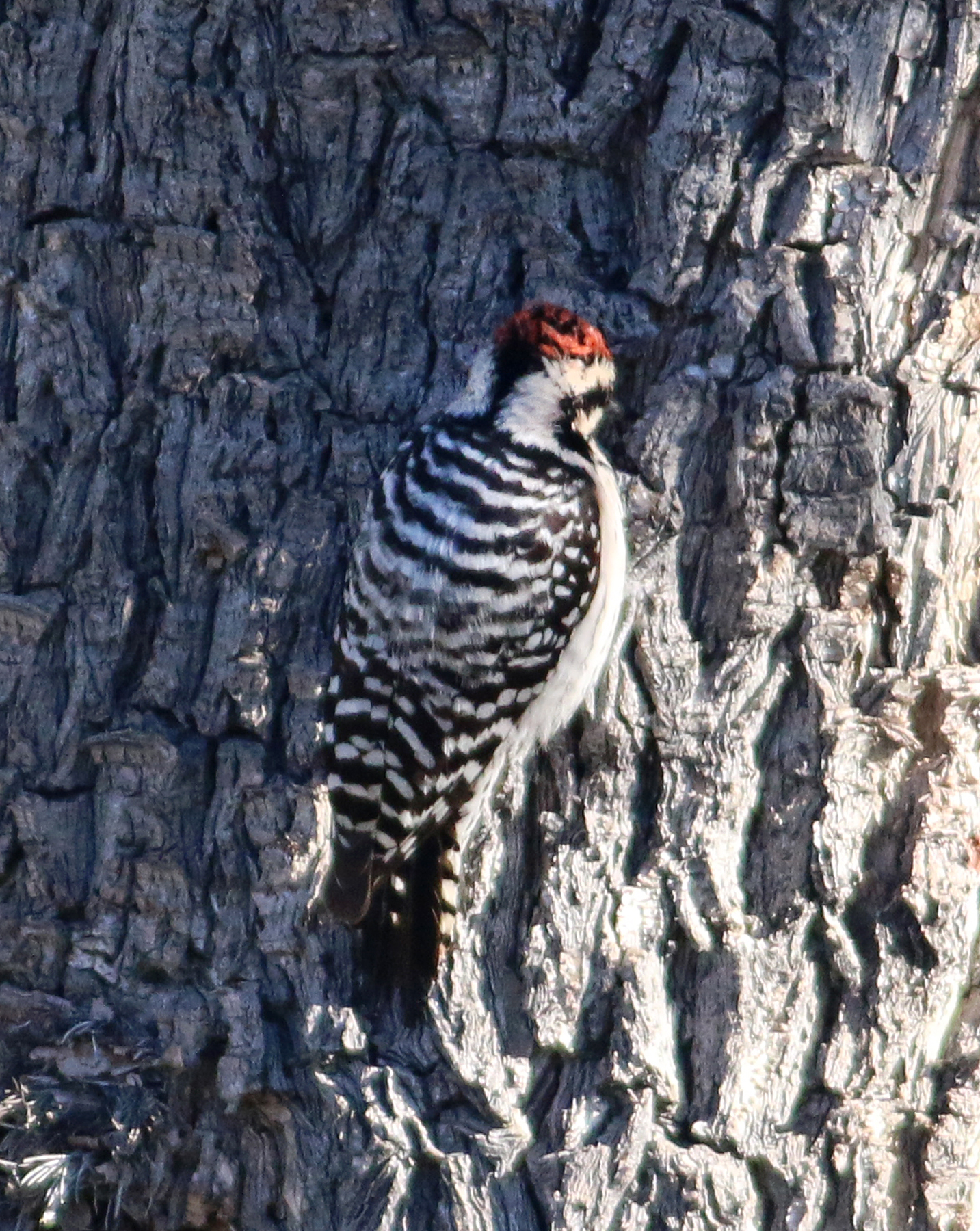We spent three days in the desert on this trip: one day at Anza-Borrego State Park, and two in the Joshua Tree / Big Morongo area. Our main targets were the difficult thrashers (LeConte’s and Crissal) along with the more typical desert birds. Needless to say that we don’t have much desert habitat in New Jersey, so seeing even the common desert species was fun for us.
We had planned to walk the popular Palm Canyon Trail of Anza-Borrego, but it was closed due to recent flooding, so we spent the first part of our morning near the Borrego Springs landfill (which doesn’t sound great, but it was actually quite nice), and the second half near the Wastewater Treatment Plant ponds (which sounds even less pleasant, but it’s a nice mesquite bosque). Both of these walks consisted of wandering through the desert between sagebrush and mesquite and the first blooms of the season, listening for any singing birds and looking for movement. At the landfill we often heard mimid vocalizations, but they were always due to mockingbirds, not the desired thrashers. The highlights here were numerous Phainopeplas, a pair of Loggerhead Shrikes, and a group of more than 20 Swainson’s Hawks lifting off from their overnight roost north of us. We then moved on to the WTP ponds where the mesquite was thicker, and there we had a little more success. We spotted a couple pairs of Black-tailed Gnatcatchers, a pair of Verdins including one making a nest, and shortly after speaking with a trio of local birders who assured us we were at ‘Ground Zero’ for thrashers, I was able to get a quick view of a Crissal Thrasher singing atop the mesquite.
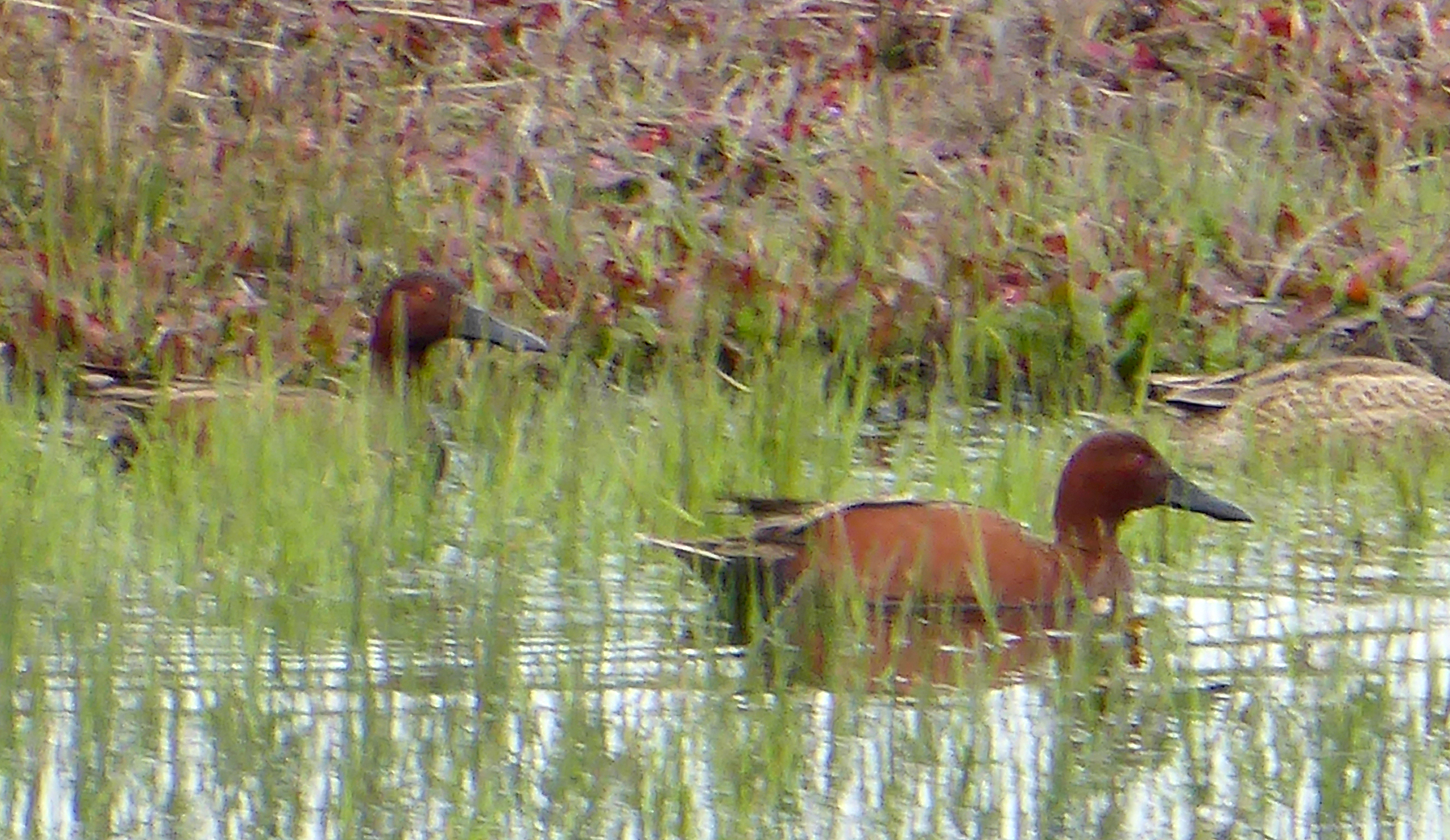
Cinnamon Teal was the only waterfowl that we saw on this trip that we don’t find regularly in New Jersey. These are good-looking ducks. We saw them in the WTP ponds and elsewhere. Photo by Pete Mooney.
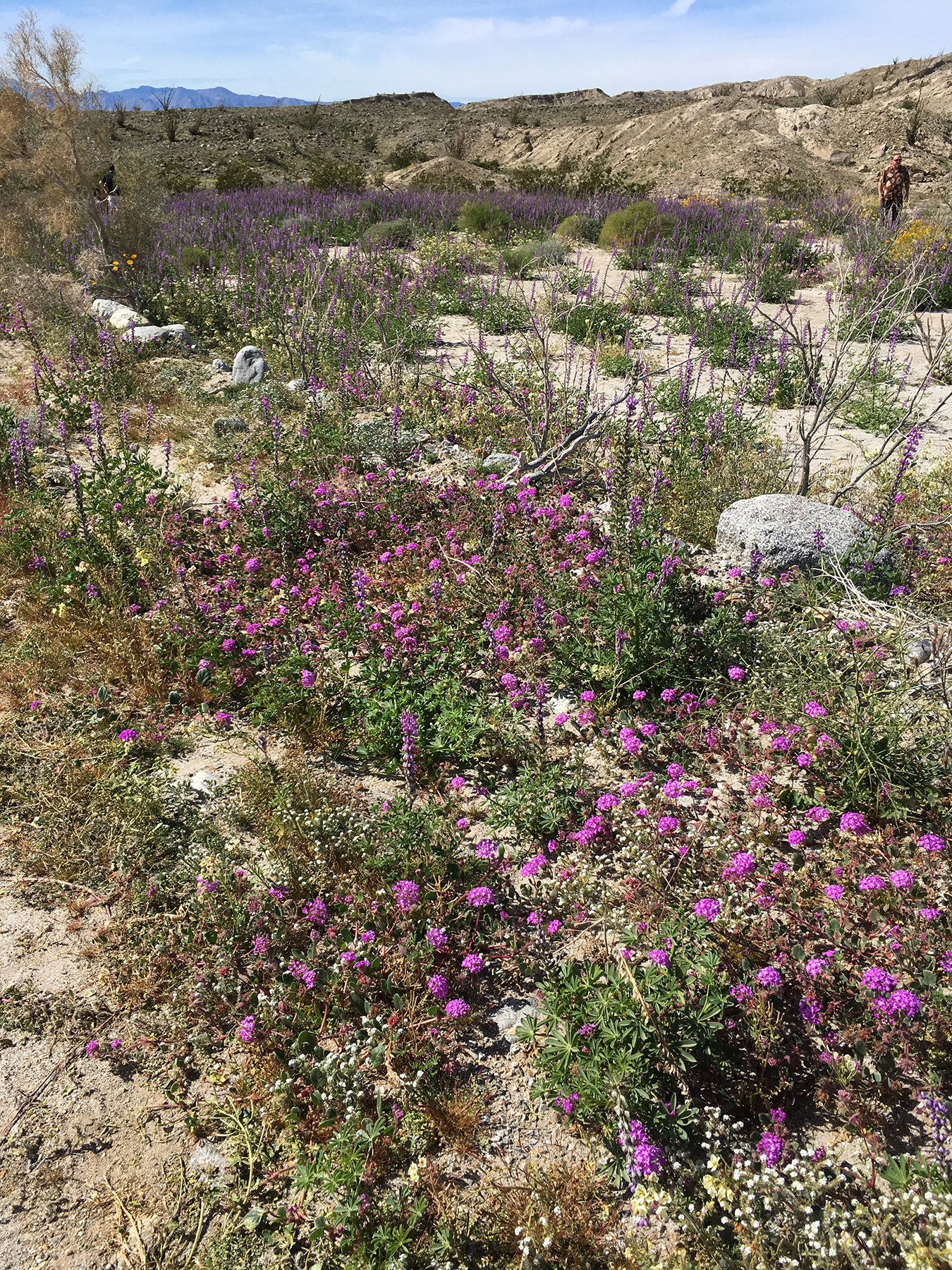
Flower season was beginning in parts of the desert. A super bloom is predicted for this year. Photo by Jeanine Apgar.
We moved onward to Yucca Valley, where we skipped the motel routine and instead rented a spacious home for the next two nights, but on the way we stopped at the Coachella Valley Preserve, where some interesting birds were being seen. Unfortunately, by the time we arrived, we were tired and it was windy and mid-afternoon, so activity was low. When we neared the McCallum Trail pond and oasis though, we started hearing bird chatter that turned out to be a mixed flock of Lesser Goldfinch and Lawrence’s Goldfinch. Lesser Goldfinch are relatively common, but this was the only location where we would see a Lawrence’s, which was a lovely bird and a lifer for me.
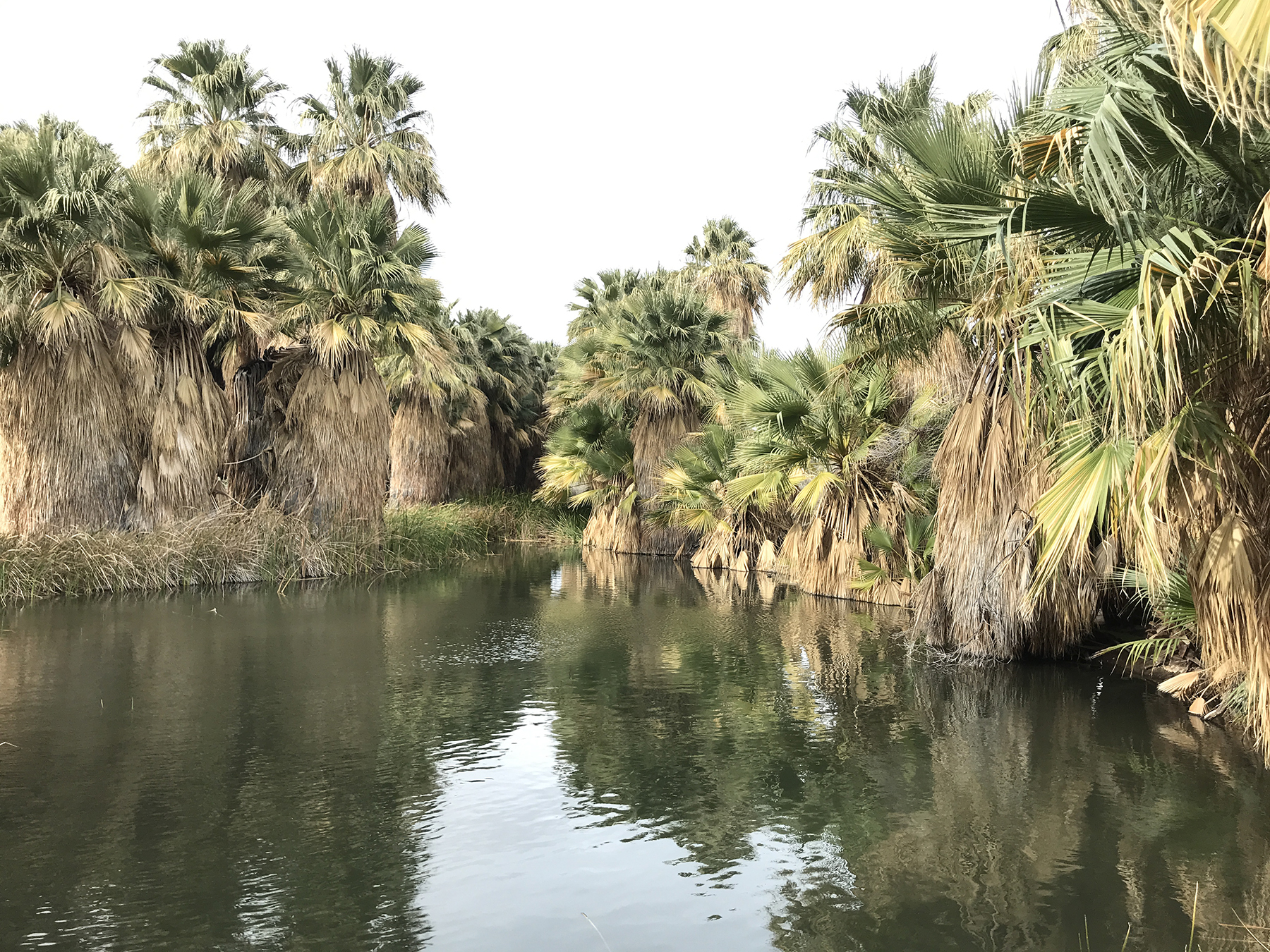
McCallum Pond. It is so amazing to see oasis ponds like this, surrounded by huge fan palms, in a desert environment.
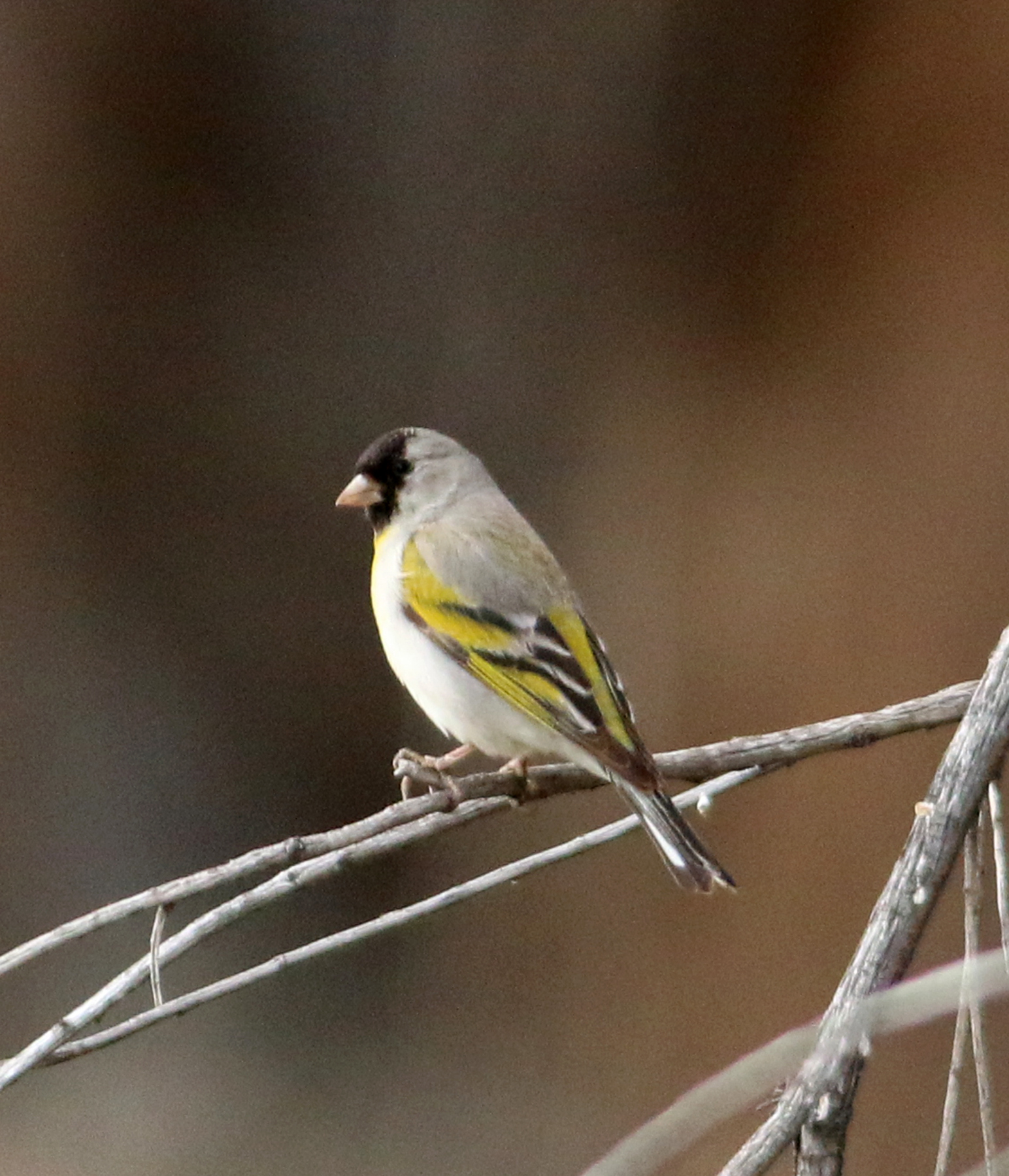
Lawrence’s Goldfinch, which was a major target for me on this trip. They are interesting partly because unlike most birds, they don’t return reliably to the same place each year, but instead have a tendency to wander.
The following morning we began at the Big Morongo Canyon Preserve and Covington Park; Big Morongo has extensive property with numerous cottonwoods and willows and fan palms abutting the desert that serves as a natural magnet for migrating birds, while the adjacent Covington Park is a small town park with cottonwoods and eucalyptus that is worth a quick visit. It was too early in the season to get the full effect, but it’s clear why this is a favorite location during migration time. We began at Covington Park because Big Morongo was not yet open, and the cottonwoods were filled with Mountain Chickadees, Audubon’s Yellow-rumped Warblers, and Lesser Goldfinch, with a few new species mixed in. We found three male Vermillion Flycatchers sparring over a single female in the group, had super views of a pair of Red-breasted Sapsuckers, and Pete spotted a Great Horned Owl in the still-bare cottonwoods. In Big Morongo we added a Barn Owl hiding in the fan palms and we spotted Bushtits paired up and making their nest near the trails. We barely touched the extensive canyon trails of Big Morongo, but this is clearly a place that deserves more attention if we ever return.
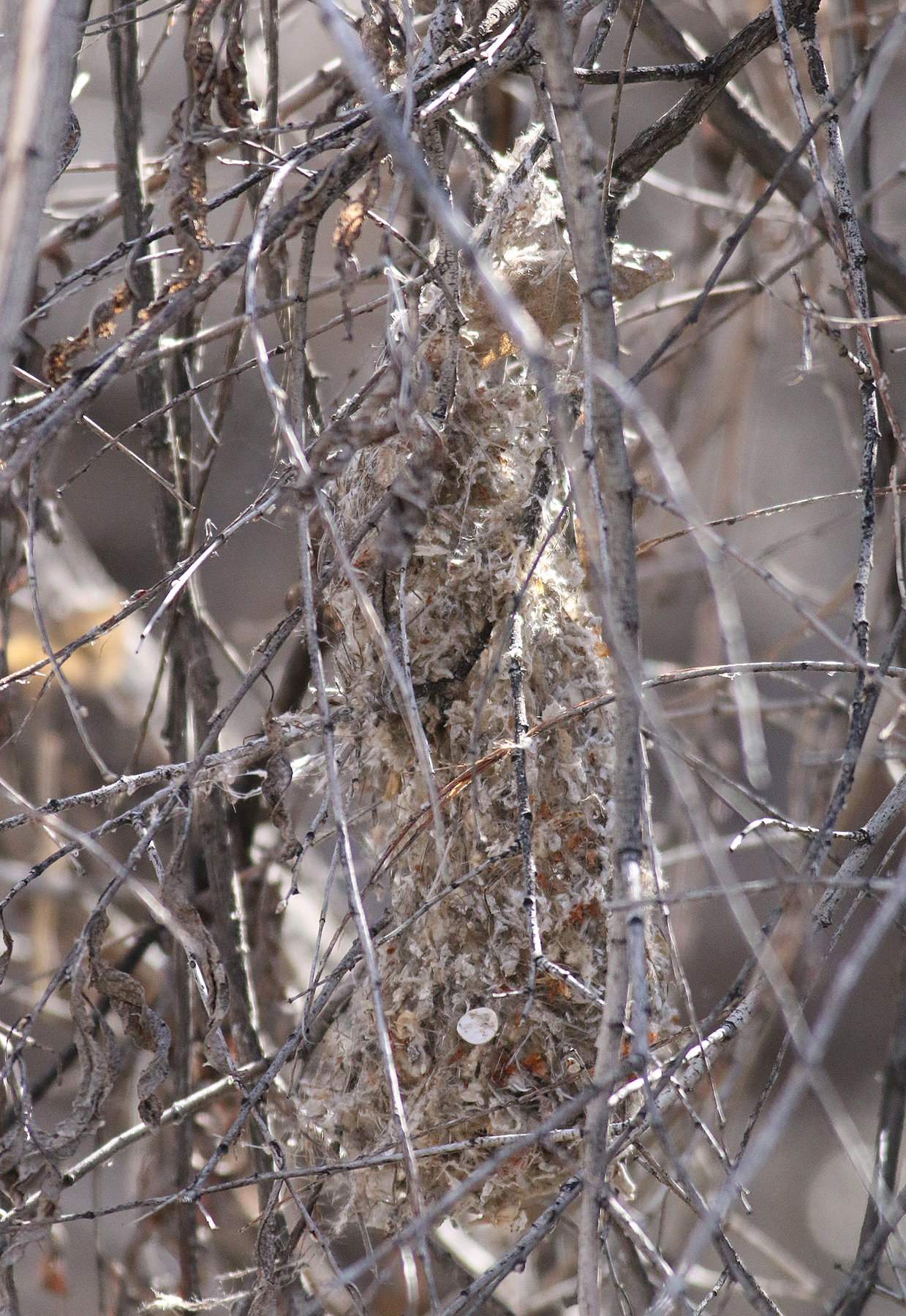
And here’s what the Bushtit nest looks like. We heard it described as ‘an old sock’, which is very apropros.
In the afternoon we planned to look for birds in Joshua Tree National Park, but the conditions were tough, with constant 30 mph winds creating havoc and keeping the birds hidden. We did view several handsome Black-throated Sparrows, but little more. It was a good day for simply enjoying the scenery and the rock climbers and the massive blooms that were just starting to appear on the Joshua Trees.
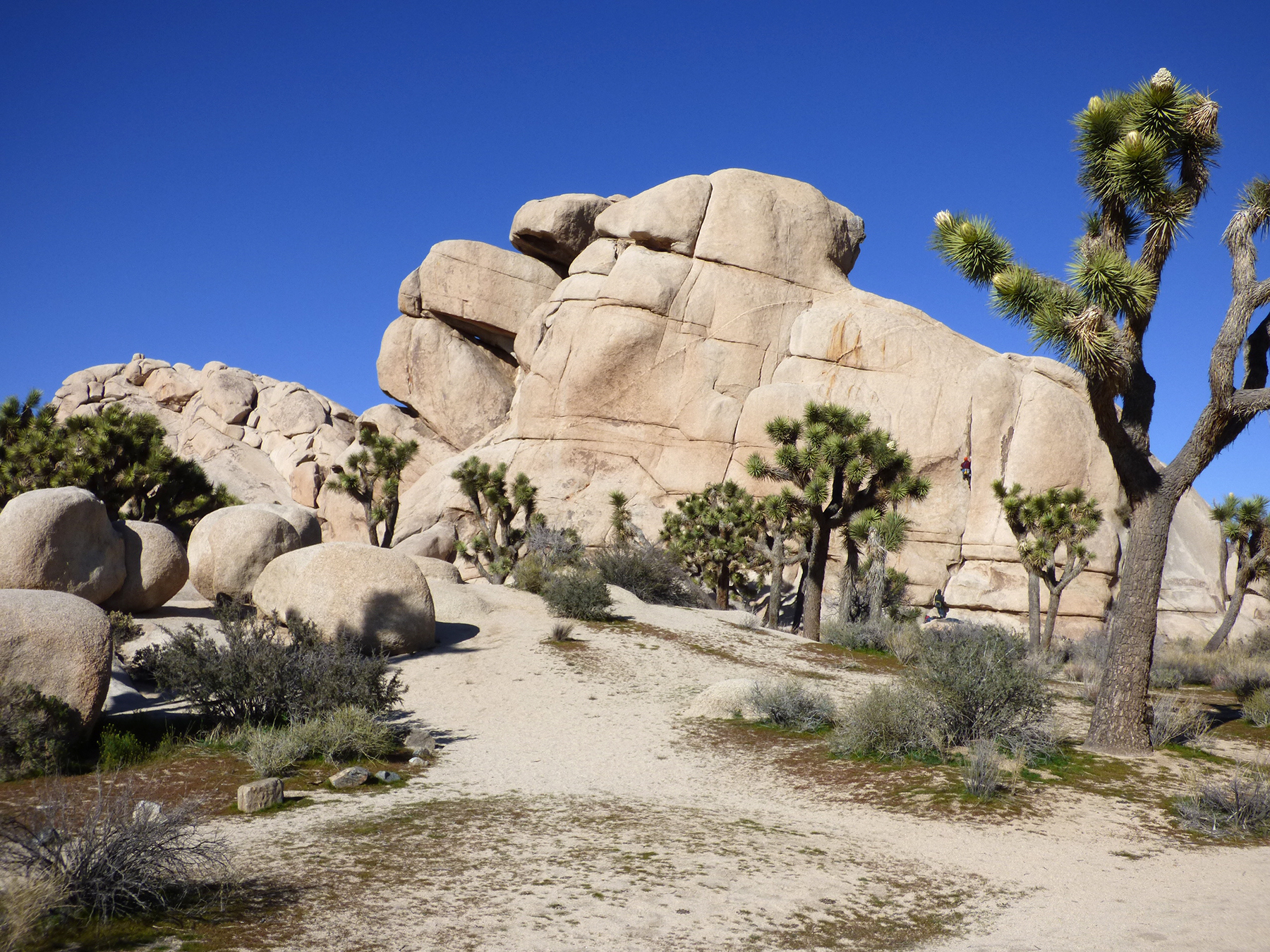
The rock climbers love the Hidden Valley area of the park, which mostly looked like this. Photo by Jeanine Apgar.
We returned to Joshua Tree for our final morning in the desert, to the Black Rock Campground. I was looking at a trail map at a kiosk before beginning the walk, when I noticed some quails moving between the brush. I quickly called Jeanine and Pete over for what I assumed would be tough views of these Gambel’s Quails scurrying away from us. We all had good views eventually, but then it got even better, as one bird started singing and then flew into a low cactus in the morning light and continued singing for a few minutes. Wow! What a privilege to see that performance. He then moved onward, and this time decided that he’d like to display and sing from atop a Joshua Tree, where he repeated his performance again. I never thought that I’d see something like that from so close and under such perfect conditions. This bird probably wondered why these humans kept repeating their “wow” call.
We continued our stroll through the desert hillside, finding several Cactus Wrens and Bewick’s Wrens, but missing the Rock Wrens and Canyon Wrens that we hoped to find. Like the Gambel’s Quail, one of the Cactus Wrens also decided to appear atop a nearby Joshua Tree for a priceless photo op. Other birds seen on this walk included a pair of Pinyon Jays and another desert specialty, Ladder-backed Woodpecker. It was a great morning, but by this point it was time for the long ~ 3 1/2 hour drive out towards the Santa Barbara area to chase some rare species in our final portion of the trip, as will be recounted in the final blog of this series.
